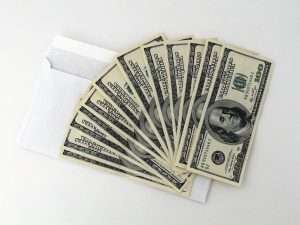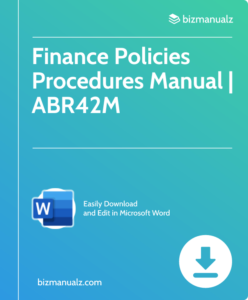How Depreciation Affects Cash Flow

Depreciation is key in the cash flow of businesses. It is vital to comprehend how it changes financial statements and, ultimately, the company’s profits. By spreading the cost of an asset over its useful life, depreciation reduces its value in the balance sheet. This reduction influences the profit and loss statement and cash flow. How depreciation affects cash flow.
Reduction Affects Cash Flow
Depreciation expense shows the gradual wear and tear or obsolescence of assets owned by a business. As these assets lose their value over time, they are gradually expensed instead of being deducted as a lump sum at the start. This lets businesses allocate costs accurately and match them with revenue generated over many accounting periods.
By reducing the value of assets on the balance sheet, depreciation indirectly impacts cash flow. When an asset’s value goes down due to depreciation, the company experiences higher net income since depreciation expense is taken away from revenue to calculate profit. High net income leads to higher tax liability, which lowers cash flow.
Also, when an asset reaches its useful life and is fully depreciated, there are no more expenses related to that asset in the profit and loss statement. This halt of depreciation expense has a positive effect on cash flow, as it increases net income without any deductions for depreciation.
For instance, consider a manufacturing company that invested in machinery worth $100,000 with an expected useful life of 10 years. Assuming straight-line depreciation, which allocates equal expenses each year over those 10 years, the annual depreciation expense would be $10,000 ($100,000 divided by 10).
In this case, during each year of depreciation, there would be a reduction in both net income and cash flow by $10,000. But, at year 11 when all depreciation has been accounted for and there are no more expenses associated with that machinery on the profit and loss statement, there would be a rise in net income by $10,000 without any corresponding deduction for depreciation. This increase directly impacts cash flow positively.
Definition and Explanation of Depreciation
Depreciation is the decreasing worth of a physical asset over time. It the opposite of fixed asset capitalization. This is due to deterioration, becoming obsolete, or any other factors that reduce its useful life. It is reflected in financial statements as an expenditure, which impacts cash flow.
As assets age or become outdated, their value drops. This affects a business’s financial position. Depreciation allows a company to share out the expense of an asset across its useful life, which reduces taxable income.
A special feature of depreciation is that it does not involve cash leaving the business. Instead, it is a way of spreading out the original investment. For instance, if a company buys machinery for $100,000 with an expected useful life of 10 years, they may depreciate it by $10,000 per year. This depreciation outlay lowers taxable income by $10,000 each year without actually needing an every year cash payment.
Top Tip: Knowing how depreciation impacts cash flow is crucial for businesses. It has an effect on their tax liability and general financial performance. By computing and recording depreciation costs accurately, businesses can manage their cash flow properly and make wise financial decisions.
The Impact of Depreciation on Cash Flow
Depreciation has a big effect on cash flow for businesses. If they comprehend the relationship between depreciation and cash flow, owners of businesses can make wise decisions to manage their finances properly.
Let’s take a closer look:
| Category | Explanation |
|---|---|
| Depreciation Expense | Represents a decrease in value of an asset due to wear and tear or obsolescence. It’s an expense on the income statement, but no cash goes out. |
| Cash Flow from Operations | Shows the actual cash created from daily business activities. It is calculated by adjusting net income for non-cash expenses – like depreciation – to show the true money-generating ability of the company. |
| Net Income | The profit or loss made by a company after deducting all expenses, including depreciation. Net income may not show the company’s true cash position as it includes non-cash items like depreciation. |
| Cash Flow from Investing Activities | Involves changing the company’s investments, like purchasing or selling assets. Depreciation affects this by reducing the value of assets over time, which impacts potential gains or losses when an asset is sold. |
By taking depreciation into account, businesses can evaluate their financial health and make wise decisions regarding investments and future growth opportunities.
Pro Tip: Knowing how depreciation affects cash flow can help businesses plan for long-term sustainability and evaluate the financial feasibility of new projects or investments.
Managing Depreciation for Better Cash Flow
Depreciation is key for successful cash flow management. Knowing what effect it has on cash flow helps businesses make smart decisions for their fiscal wellbeing.
To best handle depreciation for improved cash flow, follow these three steps:
- Estimate asset life: It’s important to calculate the lifespan and revenue-generating potential of assets. By accurately gauging an asset’s useful life, businesses can spread its cost out over time, limiting its effect on cash flow.
- Choose appropriate depreciation methods: There are multiple ways to calculate depreciation, like straight-line or accelerated methods. The right method depends on things like the type of asset and its expected usage. Adjusting depreciation rates can help businesses sync cash outflows with inflows more effectively.
- Monitor and update depreciation schedules: Regularly reviewing and revising depreciation schedules is essential for precise financial reporting. As market conditions shift or assets become outdated, adjustments must be made to reflect their actual worth. This ensures that businesses have an accurate understanding of their financial standing and can plan accordingly.
In addition to these steps, here are some other tips:
- Strategically plan asset replacements: forecasting when an asset will become obsolete allows for proper budgeting and prevents unexpected costs that could pressure cash flow.
- Look into leasing options: instead of buying assets outright, leasing offers flexibility and often lower upfront costs, benefiting cash flow in the short term.
- Maximize asset utilization: ensuring that assets are used wisely lowers unnecessary expenses and extends their useful life, which is great for cash flow.
By managing depreciation well with these steps and tips, businesses can optimize their cash flow position. This allows them to allocate resources more efficiently, invest in growth opportunities, and face tough economic times with more resilience.
Case Studies and Examples
A table showcasing various case studies and examples can be seen below. It shows how assets lose value over time due to depreciation. The initial value is the original cost, while the salvage value is its estimated worth at the end of its useful life.
The annual depreciation expense stands for the reduction in value businesses deduct each year.
| Case Study | Initial Value | Salvage Value | Annual Depreciation Expense |
|---|---|---|---|
| Case Study 1 | $500,000 | $100,000 | $20,000 |
| Case Study 2 | $1,000,000 | $200,000 | $40,000 |
| Case Study 3 | $250,000 | $50,000 | $10,000 |
Depreciation affects cash flow indirectly. It does not directly affect cash movements, but it has an effect on profits and taxable income. Businesses reduce their tax liability and increase their cash flow by decreasing taxable income through depreciation expenses.
Maria, a business owner, saw this happen with her company’s cash flow. She had a manufacturing plant with machinery of $500,000 and an expected useful life of 20 years. She deducted $25,000 each year as depreciation expense.
By taking advantage of this tax advantage, Maria was able to allocate more funds to operational costs and expansion strategies. This enabled her business to do well in difficult economic conditions.
These case studies and examples help business owners understand how depreciation impacts their cash flow dynamics. This lets them make educated decisions about asset acquisition, tax planning, and financial management.
Depreciation Affects Cash Flow
To wrap it up, depreciation has a huge effect on cash flow. It reduces a business’s tax income, so they can keep more money for investments or upcoming costs. Plus, it helps to report the decrease in value of assets over time. This means financial statements give a clear view of the company’s finance.
It’s vital to keep in mind that depreciation isn’t linked to the cash available to the business. Cash flow depends on other things like sales revenue, expenses, and financing activities.
Also, companies need to be sure their depreciation methods and estimates follow accounting regulations and show the real value of assets. This means they can make smart financial choices and manage cash flow better.
Pro Tip: Companies should review their asset base and change depreciation rates often. This allows them to match financial statements with the company’s economic performance. This makes sure financial reports are accurate and decisions are made well.
Frequently Asked Questions

Q: What is depreciation?
A: Depreciation is the gradual decrease in the value of an asset over time.
Q: How does depreciation affect cash flow?
A: Depreciation affects cash flow by reducing taxable income, resulting in lower taxes and an increase in cash flow.
Q: How is depreciation calculated?
A: Depreciation is calculated by dividing the cost of an asset by its useful life.
Q: Can depreciation be reversed?
A: No, depreciation is a non-reversible expense that reflects the wear and tear of an asset over time.
Q: Does depreciation impact the actual cash balance?
A: No, depreciation is a non-cash expense, so it does not directly impact the actual cash balance.
Q: Are there any tax benefits associated with depreciation?
A: Yes, depreciation provides tax benefits by reducing taxable income and lowering the overall tax liability.
















Leave a Reply